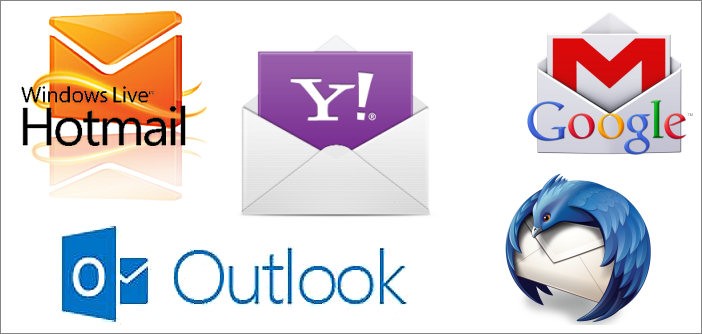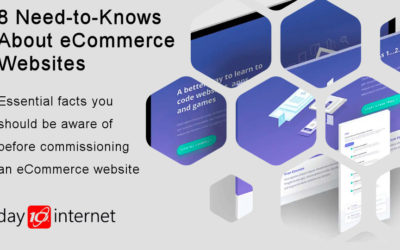Why do you have a website? Is it just to look good? Is it just to make you feel good? Or perhaps you’ve never given that question much thought?
I’m not trying to be facetious when I say this because there are many business owners who haven’t given the question much thought. Assuming you’re not one of those, you would probably say that your website is to provide you with business leads that you can follow up offline and close sales.
But have you given much thought to the process by which those leads will happen? Many websites are set up on the assumption that visitors will arrive at the site from, say, search engines, navigate through the site, fill in a contact form, or pick up the telephone and call you.
But do you think that this is going to happen very often? It would be great if it did, but how many people are going to arrive cold at your website, like what they see, and then make an enquiry? Let’s be realistic, not very many.
What’s more likely to happen is that they’ll look at your site, go off to check a few of your competitors’ sites and then, if you’re lucky, really lucky, come back to yours and then make an enquiry. So how can you increase the likelihood that they’ll come back to your site and do that?
The answer is email lists
The primary goal of your website should be to collect prospective customers’ email addresses. Generating customer leads and turning them into business is the goal of your sales marketing process.
Every company should have an email list. Because it is with this list that you can really start to generate business. If you look at any business that does all, or most, of its business online, the secret of its success is its email list.
Hotmail
A graphic illustration of the value of email addresses lies in the history of Hotmail. Hotmail was originally started in 1996 by a couple of independent entrepreneurs in the US. They offered a free email service to anyone who subscribed. In 1997, Microsoft bought Hotmail from them for a reported $400m.
What was it that made Hotmail worth this amount to Microsoft? The email system itself? Hardly, since any competent software developer can build an email system for far less than $400m.
No, the value lay in the 8 million email addresses that Hotmail had gathered in the short time that their system had been operational.
This is a stark reflection of the value of the email lists.
The primary goal of your website should not be to induce visitors to contact you straight away. Yes, some may do that, but if they do it will be a minority of visitors. You are far more likely to persuade your visitors to part with their email addresses than contact you straight away with an enquiry.
So what should you do to persuade visitors to give you their email addresses? Start by adding a subscription form on your website. Make it visible, add it to every page. If you have a blog, add it to the bottom of every article you post.
Some people will advise you to offer visitors something in return for subscribing. It used to be that simply asking people to sign up for your newsletter in return for a free report or eBook was enough to get people to subscribe. These days, people have become immune to these techniques and you need to do more.
What you need to do is stand out from the crowd. No this doesn’t mean that you have deck out your website in garish colours and outlandish design. What you need to do is offer quality. Most likely, the first thing visitors will see when they arrive at your site is a blog article. Offer something in return for subscribing by all means, but above all, make sure that visitors are going to like what they see.
Make your blog articles interesting. Your email list is a list of prospective customers, so write about topics that will be of interest visitors from your target market. Offer opinions. Be provocative. Don’t be put off if some people disagree with you. It’s good if some do. It means that people are taking note of what you write.
Finally, ensure all your articles are friendly and professional. Be provocative but don’t be offensive. Aim your articles at the reader by using words such as “you” rather than “we”. And, above all, use correct grammar and spelling.
Stay is touch with subscribers
Let’s assume now that you’ve done all this and now have your email list. What do you do with it? The first thing is to contact, on a regular basis, the people who have subscribed, to keep them aware of your business. These days, people are so busy, and there are so many distractions, that they will quickly forget about you. Don’t let that happen. Stay in touch with them.
A newsletter is the best way to do this. Keep your newsletter fairly short and make it interesting and relevant. These days there are so many online newsletters around that people will simply unsubscribe from yours if it doesn’t stand out from the crowd. All the comments I made above about blog posts and articles apply equally to your newsletters.
From time to time, use your email list to make specific offers and announcements. For example, if you launch a new product, announce it by email to your subscribers.
Don’t just have one email list. It’s a good idea keep at least two. One containing the emails of people who have subscribed from the site. These are your prospects. The second list should contain existing customers’ email addresses. From time to time you may want to contact existing customers differently from prospects. For example, if you’re launching an add-on to an existing product, you might want to run a marketing campaign targeted specifically at existing customers.
Quality not quantity
Why You Should Never Buy Email Lists
- You can’t trust the quality of the list.
- You’ll come across as a spammer.
- You’ll run into trouble with your email service provider.
- Other people are using the exact same list.
- You’ll get a poor response rate.
- Your reputation will take a serious knock.
- You might end up facing a big fine or legal bills.
The people you want in your email list should be prospective customers. You want people who are likely to be interested in what you have to offer now or, if not, what you may have to offer in the future. If you’ve done your job correctly during the collection phase then the people who have opted in to your list have done so because they’ve seen something that interested them.
There are no shortcuts. Building up an email list of prospective customers who have voluntarily opted in to your list will take time and effort. Don’t underestimate this. It can take months and in some cases years. But the end result will be gold dust for your business. However, don’t attempt to shortcut the process and buy in email lists from outside companies. This will simply give you a list of irrelevant emails that, rather than being gold dust for your business, will simply be dust.
Finally
I can’t stress enough how important email lists are. Your entire marketing and sales process is driven from your email list and, as such, it is fuel for your marketing process and the lifeblood of your business.






